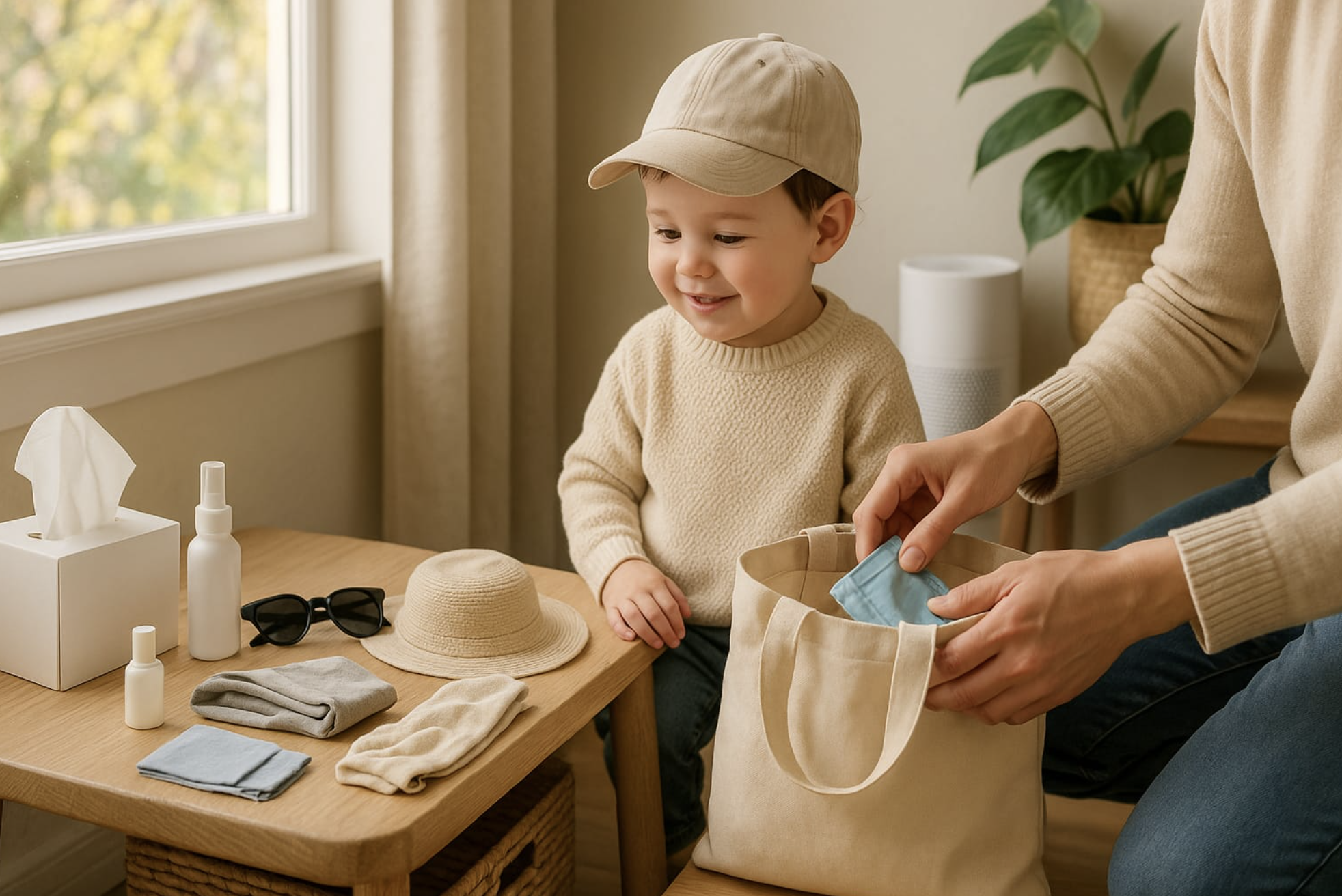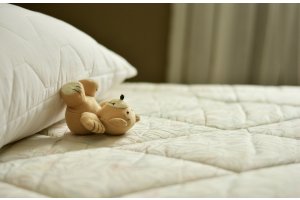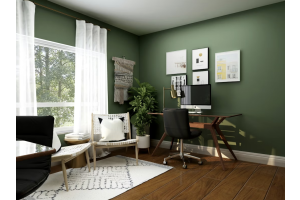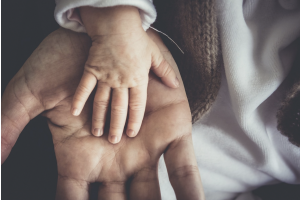Toddler Allergy Season Starter Kit

Allergy season with a toddler feels like packing for three climates at once: the pollen swirling outdoors, the dust that sneaks into soft toys and bedding, and the day-to-day realities of daycare life.
Little kids can’t always tell us what’s wrong, so our job is to notice patterns and set up simple routines that keep small lungs comfortable. This starter kit focuses on what parents can control - air, fabrics, routines, and calm, kid-friendly breathing support. For families whose pediatricians include inhaled treatments in the care plan, a quiet, portable mesh nebulizer makes sessions faster and less intimidating, whether you’re at home, on the go, or handing off to a caregiver.
The Toddler Allergy Landscape
Toddlers explore with their hands and faces, spend low-to-the-ground time near carpets and grass, and nap with beloved plush friends - prime places for pollen and dust to tag along.
Add daycare swaps of blankets and toys, and you’ve got a revolving door of triggers.
The win isn’t in perfection; it’s in a consistent, easy-to-follow system that works for everyone who cares for your child.
Know Your Triggers & Patterns
- Pollen days: Itchy eyes, clear runny nose, sneezing after outdoor time.
- Dust-heavy environments: Night coughs, stuffy mornings, symptoms that calm after bedding changes.
- Daycare realities: Flare-ups after carpet time, crafts, or outdoor play; multiple caregivers to brief.
Your Allergy Season Starter Kit (What to Keep on Hand)
|
Kit Section |
Item |
Notes |
|
Daily defenders |
Fragrance-free laundry detergent |
Quick-change “home clothes” after outdoor play |
|
Daily defenders |
Saline spray or saline vials |
Use only as directed by your clinician |
|
Daily defenders |
Soft tissues + gentle face balm |
For chafed skin |
|
Daily defenders |
Wide-brim hat and toddler sunglasses |
For high-pollen days |
|
Daily defenders |
Zippered pillow/mattress encasements; 1–2 favorite plushies |
Plushies easy to wash on rotation |
|
Daily defenders |
HEPA vacuum and damp-dust cloths |
Quick evening resets |
|
Daycare bag add-ons |
Travel pack of tissues and wipes |
|
|
Daycare bag add-ons |
Printed Allergy/Flare Plan |
See plan below |
|
Daycare bag add-ons |
Labeled spare outfit |
Pack in a zip bag |
|
Daycare bag add-ons |
Inhaled meds + portable mesh nebulizer |
If prescribed; quiet, USB-rechargeable; include child mask + brief “how-to” card |
|
Home base |
Laundry schedule |
Bedding weekly; plushies on rotation |
|
Home base |
Damp-wipe hard surfaces |
Skip scented cleaners |
|
Home base |
Small bin for “used today—needs washing” |
Prevents items from getting lost |
The Flare Plan Card
Notice & settle. Sit your toddler upright; slow the moment with a simple “smell the flower, blow the candle” cue.
Follow the plan. If your clinician recommends inhaled treatments during flares, use your device as directed. A portable nebulizer for kids helps many toddlers tolerate sessions because it’s fast and gentle-sounding.
Comfort care. Offer sips of water; wipe and moisturize chafed skin; switch to “home clothes.”
Monitor. Jot the time, what you did, and how your child responded so you can update your pediatrician.
Escalate if needed. If breathing seems hard, lips look bluish, your child is unusually sleepy, or you’re worried - seek care promptly.
Pollen-Day Playbook
Check the timing
Pollen levels are often highest in the early morning. If you notice sneezing or itchy, watery eyes after AM playground time, shift outdoor play to late afternoon when counts usually dip.
On days with very high pollen, keep activities shorter and closer to home so you can rinse off and change quickly.
Building your schedule around symptom patterns is an easy win that doesn’t require extra gear - just a small tweak to timing.
Dress smart
A wide-brim hat and toddler sunglasses act like simple “pollen shields,” keeping pollen off the hairline, lashes, and the delicate skin around the eyes.
Choose snug-fitting frames that your child doesn’t mind wearing and make it part of the getting-ready routine: shoes, hat, glasses - go.
If you have a kid who loves pretend play, call them the “Sun & Pollen Patrol” to boost cooperation.
Swap & wash
When you come back inside, change your toddler into clean “home clothes” right away and drop outdoor clothes straight into a hamper or laundry bag.
This keeps pollen from transferring to couches, rugs, and bedding. If possible, keep a small basket of comfy indoor outfits near the entry so the swap is fast and friction-free.
Rinse & reset
A quick bath or a face/hand rinse before nap removes pollen from skin and hair, helping many kids settle with fewer sniffles or coughs.
Even a damp microfiber cloth on your face, hands, and hairline can make a difference when you’re short on time. Follow with your usual moisturizer to protect sensitive skin.
Windows closed, fan on
On high-pollen days, keep windows shut to limit outdoor air exchange and run a fan or air purifier to keep indoor air steady.
Clean or replace filters on schedule so the system actually helps. If your child naps in a specific room, prioritize that space for the cleanest air and least draft.
Dust-Day Playbook
Wash sheets and pillowcases weekly on hot, and limit bed buddies to one or two plushies on rotation so they’re easy to clean.
Add zippered pillow and mattress encasements to create a breathable barrier that quietly lowers dust-mite exposure overnight.
Damp-dust hard surfaces so particles stick to the cloth, and vacuum slowly with a HEPA vacuum to capture fine dust instead of blowing it around.
Simplify the sleep space by skipping extra rugs, heavy curtains, and fabric bins - fewer “catchers” means easier weekly resets and calmer air.
Daycare Coordination
Send a one-page Allergy/Flare Plan with simple pictures that show what to watch for and first steps to take, plus your contact info.
Label tissues, saline, balm, and a spare outfit, and keep them together in a named zip bag so staff can act quickly during busy moments.
Ask for a brief pickup note - what they noticed, what they did, and how your child responded - so you can fine-tune the evening routine.
Cleaning & Packing Basics
After each use, rinse the nebulizer cup and mask per instructions and air-dry on a clean towel to prevent residue and keep mist output consistent.
Wipe the exterior daily and store the mask in a breathable pouch; keeping all parts together reduces delays when you need a quick session.
Do the deeper clean or sterilize cycle weekly according to your device manual; with a quiet, portable unit, routine maintenance supports short, predictable sessions.
Keep a ready go-bag - device, child mask, USB cable, written plan, and any prescribed meds or saline - so grandparents, babysitters, or daycare staff can help confidently.
When to Call the Pediatrician
Seek care promptly if breathing looks hard (tummy pulling in, ribs showing, fast breathing) or if your child seems unusually sleepy.
Treat blue or gray tinge around lips or face, or persistent wheeze despite your usual steps, as urgent warning signs.
Check in if a cough keeps disrupting sleep for days even after consistent home measures and any clinician-directed treatments.
Call if there’s fever or a pattern of symptoms getting worse instead of better, even if it started like a simple cold or allergy flare.
Trust your instincts - if you’re worried, call; your timely observations help clinicians act early.
FAQs for Parents
1) Humidifier, purifier, or nebulizer - which helps allergies?
They do different jobs. Humidifiers add moisture (useful in very dry air but keep clean to avoid mold). Purifiers filter particles like pollen and dust. Nebulizers deliver clinician-directed inhaled treatments or saline to the airways.
2) Can I run a nebulizer with just saline?
Only if your pediatrician recommends it for your child’s situation. Some families are advised to use saline to help loosen mucus; others aren’t. Always follow your clinician’s guidance.
3) How do I keep the mask on my toddler?
Practice when your child is well, let them decorate the mask, and pair sessions with a special book or short song. Hold the mask gently but firmly, and celebrate tiny wins - thirty calm seconds often becomes two calm minutes over a few days.






